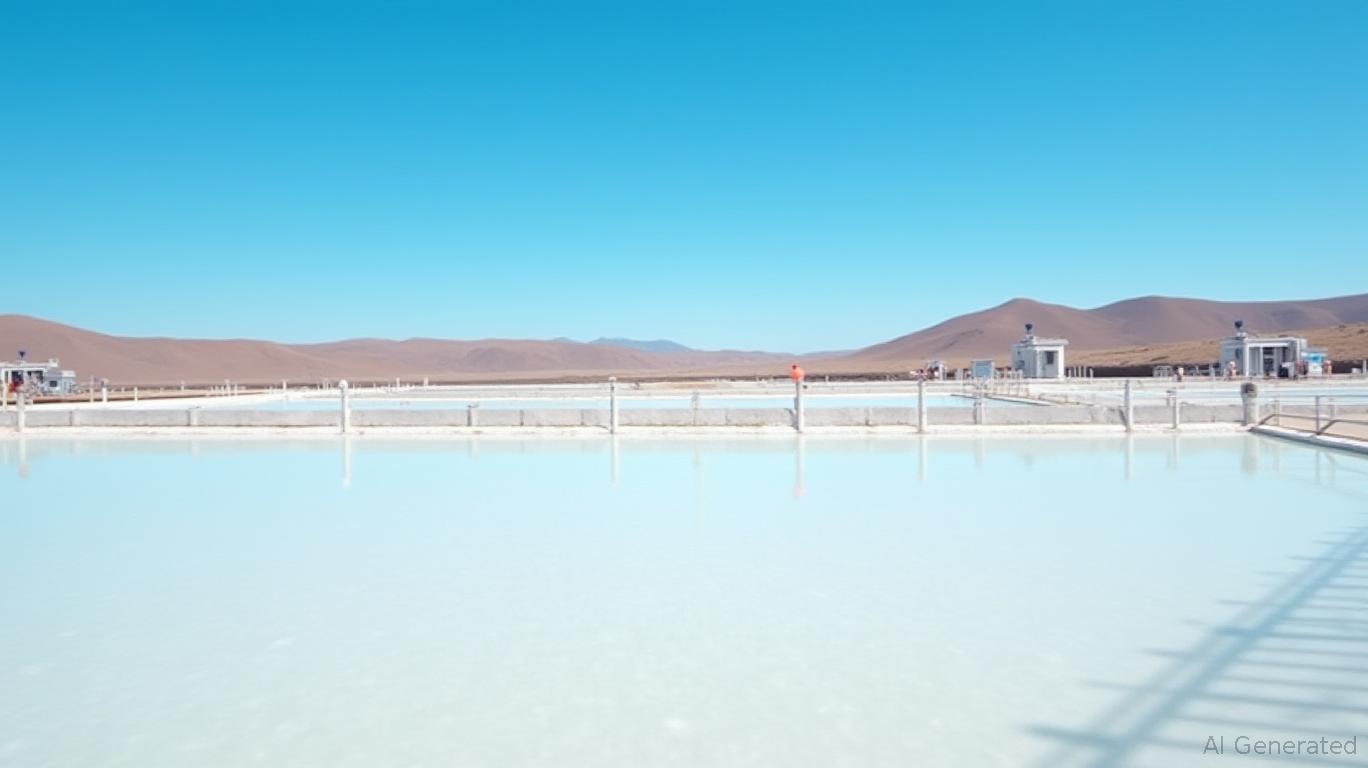SQM's Governance Overhaul: A Lithium Leader Emerges Amid Ponce's Exit
The departure of Julio Ponce, the controversial former son-in-law of Chile's late dictator Augusto Pinochet, from his role as a key shareholder in SQM (Sociedad Química y Minera) marks a pivotal shift for one of the world's most influential lithium producers. This strategic move to simplify ownership and pass control to the next generation of the Ponce family not only reduces political risks tied to its authoritarian-era legacy but also positions SQM to capitalize on rising global demand for lithium—a cornerstone of the electric vehicle (EV) revolution.

Governance Reform as a Catalyst for Institutional Investor Confidence
Ponce's exit from the six holding companies controlling his family's 22% stake in SQM is more than a generational handover. By consolidating ownership into two entities—Soc. de Inversiones Oro Blanco and Potasios de Chile—the Ponce family is streamlining decision-making and distancing SQM from its historically opaque governance structure. This restructuring addresses long-standing criticisms of corporate complexity and ties to Pinochet's regime, which have deterred some investors.
The immediate market response—SQM shares rising 0.5% and Ponce's Norte Grande SA surging 20%—suggests investors view the move as a positive step toward transparency. For institutional investors, particularly those with ESG mandates, this governance overhaul reduces reputational risks and aligns SQM with global standards of corporate accountability.
Strategic Partnerships and Regulatory Challenges: Navigating the Path to Growth
SQM's partnership with state-owned Codelco to extend lithium operations in Chile's Atacama Desert beyond 2030 is central to its future. While the deal faces opposition from Chilean politicians and SQM's major shareholder Tianqi Lithium Corp., it represents a critical pivot toward aligning with Chile's National Lithium Strategy—a policy requiring state majority ownership in new projects.
This strategy, though contentious, could ultimately stabilize SQM's long-term prospects. By collaborating with Codelco, SQM secures access to government-backed infrastructure and regulatory support, mitigating risks in a sector increasingly subject to nationalization debates. While the partnership's approval hinges on Chinese antitrust clearances and domestic political compromises, the broader message is clear: SQM is adapting to evolving geopolitical and regulatory landscapes.
Lithium's Golden Age: SQM's Position in the EV Supply Chain
The lithium sector is on the cusp of exponential growth, with global demand projected to hit 2.5 million tons by 2030, up from 800,000 tons in 2023. SQM, as the world's second-largest lithium producer, sits at the heart of this boom. Its low-cost operations in the Atacama Desert, which account for nearly a third of global lithium supply, offer a structural advantage.
However, competition is intensifying. Australia's Greenbushes mine and China's dominance in refining and battery production pose threats. SQM's ability to scale production sustainably while navigating Chile's environmental regulations—which now mandate 30% of salars be protected by 2030—will determine its competitiveness.
Investment Thesis: Buy the Dip, Play the Long Game
SQM's governance reforms and strategic moves position it as a compelling buy for investors willing to overlook near-term hurdles. Key reasons to consider SQM:
- Reduced Political Risk: The Ponce family's departure and simplified ownership structure reduce the company's exposure to historical controversies, making it more palatable to institutional investors.
- Strategic Partnerships: The Codelco deal, while contentious, could unlock access to capital and regulatory favor in Chile, a lithium-rich but politically volatile market.
- Cost Leadership: SQM's low-cost production in the Atacama Desert provides a margin advantage over rivals, critical as lithium prices stabilize post-2025.
- ESG Alignment: The governance overhaul and compliance with Chile's environmental regulations address ESG concerns, attracting a broader investor base.
Risks to Consider
- Regulatory Delays: Approval of the Codelco partnership and Chinese antitrust clearances could prolong uncertainty.
- Lithium Price Volatility: Oversupply risks and slowing EV adoption in key markets (e.g., China's subsidy cuts) may pressure margins.
- Geopolitical Tensions: Rising protectionism in lithium-rich countries could disrupt global supply chains.
Conclusion
Julio Ponce's exit from SQM is a turning point. By embracing governance reforms and strategic partnerships, SQM is transforming itself into a modern, investor-friendly lithium giant. While near-term risks persist, the company's cost leadership, geographic dominance, and alignment with global ESG trends make it a standout play on the EV revolution. For investors with a long-term horizon, SQM offers a compelling entry point to ride the lithium wave—buy on dips and hold for the 2030s.

Comments
No comments yet